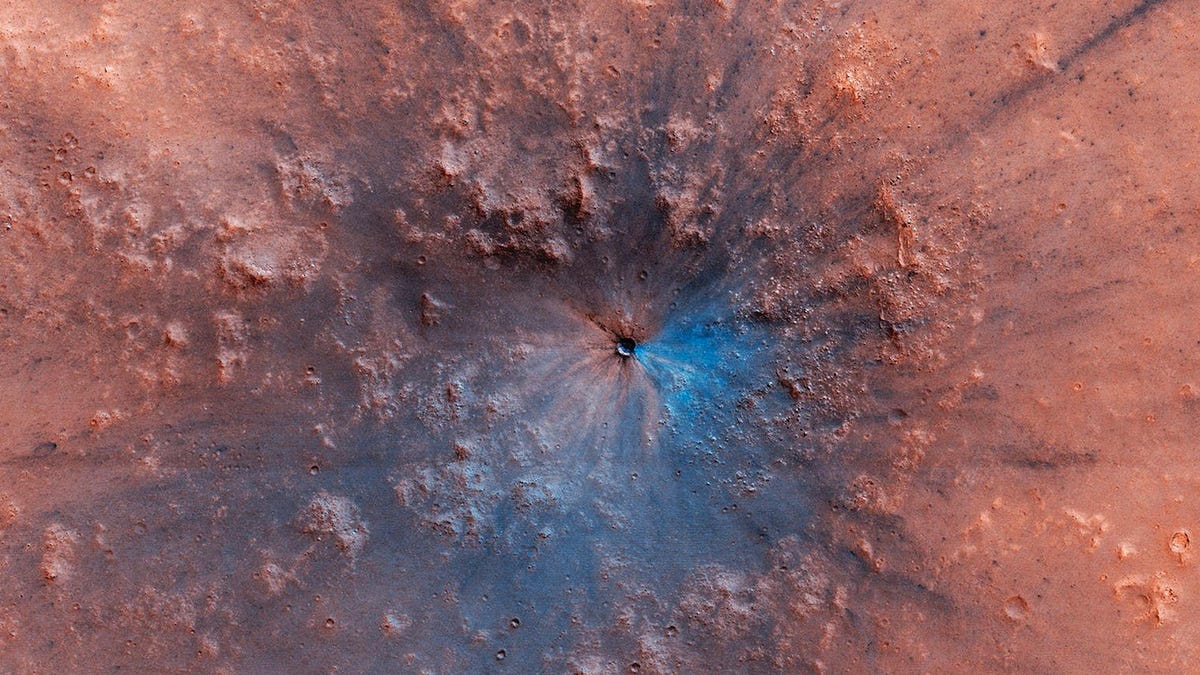New Mars crater turns the red planet black and blue
A big space rock slammed the red planet, leaving behind a cosmic work of art.

A fresh impact crater on the surface of Mars was spotted by the Mars Reconnaissance Orbiter.
Sometime between September 2016 and February of this year there was a big blast on Mars that appears to have painted the surface of the red planet with other hues as well.
The Mars Reconnaissance Orbiter (MRO) photographed the newly formed crater in April and the image was shared online earlier this month.
Mars is probably hit by chunks of asteroids and other debris on a regular basis, given its thin atmosphere and proximity to the asteroid belt, but this collision was particularly impressive.
"This is a whopper of an impact, as new craters go -- diameter is 16 m (52 feet)," Peter Grindrod, planetary sciences research leader for the UK Natural History Museum, wrote on Twitter.
Before and after photos of the region show just how much damage was done by the meteor that smacked our planetary neighbor.
KABOOM! Before and after images of a meteorite forming a brand new impact crater on Mars. Sometime between 18 Feb 2017 and 20 March 2019. pic.twitter.com/TWXtUoP5NA
— Peter Grindrod (@Peter_Grindrod) June 12, 2019
"What makes this stand out is the darker material exposed beneath the reddish dust," writes the team of the MRO's HiRISE (High Resolution Imaging Science Experiment), dubbed the most powerful camera ever sent to another planet.
The new feature represents an opportunity for scientists, who now get a closer look at a bit of the Martian surface that's been conveniently cleared of dust and its top layers of regolith.
But it's also a little bit foreboding for any space agencies or billionaires named Elon who might have construction projects in mind for Mars.

